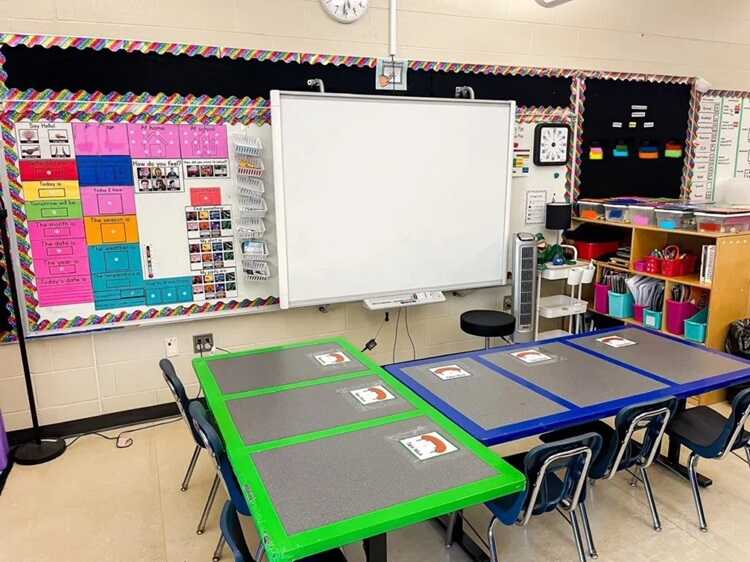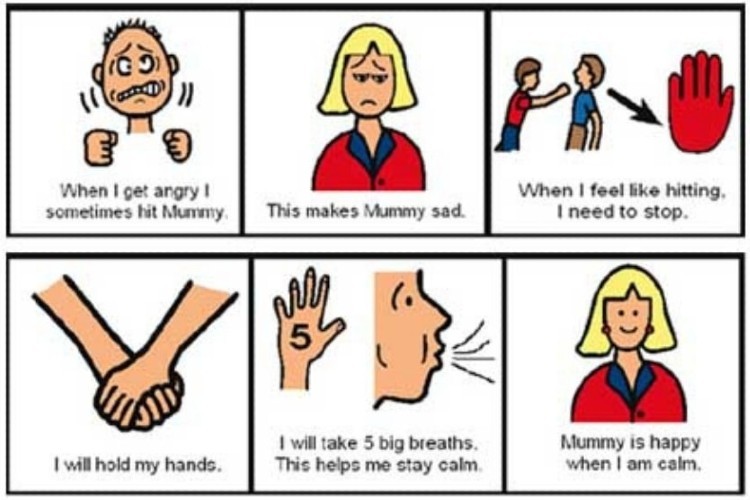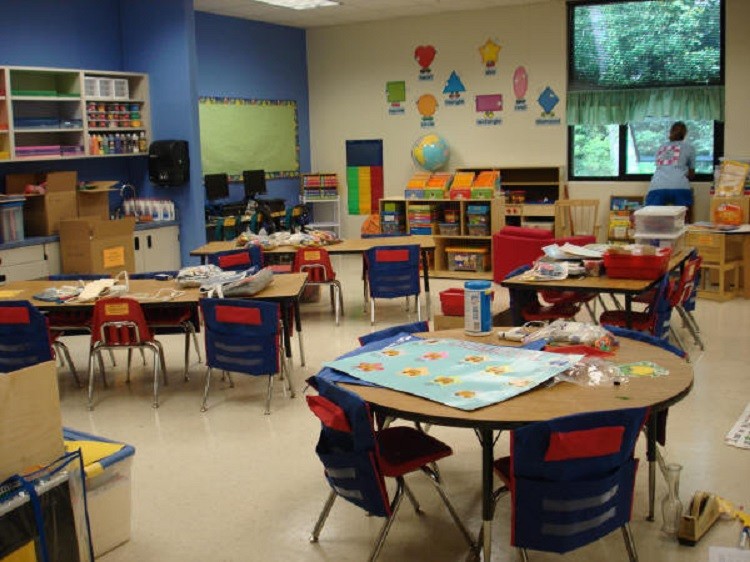What not to do with a child with autism
Oftentimes it is suggested what to do with a child with autism. However, equally as important is what not to do. It is necessary to know and understand what not to do in order to be able to provide the best environment for a child with autism.
ABA therapy programs are effective in treating children with autism because they create very structured environments where conditions are optimized for learning. Over time, these very structured environments are systematically changed so that the environment mimics what a child could expect if and when they are placed in other environments.
Here are some key areas that this article will cover:
Let LeafWing professionals educate you and your child on some key components and techniques when raising a child with autism to reach their full potential.

What not to do with discipling a child with autism
It can be hard to know what to do and not do in terms of discipline with a child with autism. Their development is different from their neurotypical peers so it is vital to make the distinction.
- Do not punish for typical autistic behaviors. Stimming, meltdowns from overstimulation, and spams are all behavior they cannot control. They are part of a normal every day for a child with autism.
- Do not be confusing in your reasoning. When explaining to a child with autism a reason for the consequence, use clear logic they can understand. Avoid things like metaphors, hypothetical scenarios, and complex vocabulary.
- Do not use punishments that are not age/developmentally appropriate. Use consequences to help your child grow and learn. Behavior is a form of communication. Learn what your child is trying to communicate and help them better communicate that next time with positive action.
Children with autism may not fully grasp traditional discipline methods or the consequences of their actions in the same way as neurotypical children. As a parent, this can be frustrating, but it’s crucial to avoid physical or verbal punishment, as it can be harmful and counterproductive. Instead, focus on responding to your child’s behavior with patience, clarity, and gentleness.
All children, including those with autism, learn through imitation, so model the calm and understanding responses you want them to adopt. Consistency is key—when discipline is delivered with love and a desire to guide rather than punish, it fosters trust, security, and more positive outcomes.

What not to do with tasks for a child with autism
Children with autism are able to complete tasks and chores similar to other children. These are necessary to help them become independent and learn essential life skills. Practice tasks with Forward Chaining or Backward Chaining methodology. Use the method that your child feels more comfortable with.
- Do not have too many expectations. Have a few clear expectations for a child to be able to remember and follow.
- Do not only have verbal instructions. Many children with autism are visual learners. Therefore, provide both words and pictures. For example, a picture of a toothbrush with toothpaste on it to remind them to brush their teeth.
- Do not make them do less just because they have autism. Children with autism are just as capable as their peers. They may need a little more help when completing a task but they can still do it. Holding a child back from their full potential will only hurt them in the long run.
Remember at the LeafWing Center your ABA therapist can put together an Acquisition Skill Plan to help hone in on a skill that needs to be refined to help your child progress in basic analysis tasks like getting dressed, brushing teeth, or combing their hair.

What not to do when interacting with a child with autism
People can often feel awkwardness or uneasiness when interacting with a child who has autism. However, there are just a few key concepts to remember for the interaction to easily go smoothly.
- Do not get into their personal space. Many children with autism do not like to be touched especially when it’s unexpected. Give them their space.
- Do not only see them as a child with autism. Autism is part of their identity but it is not their whole identity. When interacting with a child with autism, treat them like you would treat anyone else with kindness.
- Do not beat yourself up over making a mistake. As a parent of a child with autism (and just a person in general), you are going to make mistakes. So, give yourself grace, apologize, and move on.
Helping children with autism develop strong communication skills is essential for unlocking their full potential. There are many different approaches, but the most effective programs start early—ideally during the preschool years—and are tailored to the child’s age, needs, and interests. These programs should focus on both communication and behavior, using positive reinforcement to encourage progress and build confidence.
Most children with autism thrive in structured, specialized programs that provide consistency and clear expectations. Parental and family involvement is crucial, as integrating these strategies into the child’s daily life helps reinforce learning and promotes meaningful growth. When caregivers actively participate, children receive the support they need in a familiar and nurturing environment.

What not to do during meal time with a child with autism
Meal times can be a stressful time for everyone in a household that has a child with autism. With all the different textures and flavors, it can be intimidating. Children with autism have an increased likelihood of possessing food sensitivities. Both food allergies and food intolerances are common in children with autism. These children are twice as likely to have some type of food sensitivity. Refer to your pediatrician about any food allergies with your child .
- Do not make choices for them. Allow a child with autism to make choices for themselves within reason. This will give them the confidence and independence to do it on their own next time.
- Do not yell at them. For any child, this can be overwhelming but for a child with autism, this increase in sound can trigger a meltdown. Additionally, it doesn’t help fix the situation in the end.
- Do not rush or pressure them. Eating and meal times can be a very difficult time for a child with autism. Allowing them to go at their own pace and providing a safe environment for the child is a necessity.
LeafWing Center can work with you to design a plan for autism feeding issues that you may be facing with your child. Our ABA therapists are trained in creating personalized plans that match your child’s ability levels. ABA therapists are trained to address the behavior. If you are concerned about the health and wellness of your child then you need to contact your physician.
Key Takeaways
- Avoid Punishing Typical Autistic Behaviors: Behaviors such as stimming, meltdowns due to overstimulation, and spasms are often beyond the child’s control and should not be met with punishment.
- Communicate Clearly and Avoid Complex Reasoning: When explaining consequences, use straightforward logic that the child can understand, steering clear of metaphors, hypothetical scenarios, and complex vocabulary.
- Set Manageable Expectations: Avoid overwhelming the child with too many expectations. Instead, establish a few clear and achievable goals to help them remember and follow through.
- Provide Visual Instructions Alongside Verbal Ones: Since many children with autism are visual learners, complement verbal instructions with visual aids, such as pictures, to enhance understanding.
- Do Not Limit Their Potential Due to Autism: Recognize that children with autism are as capable as their peers. While they may require additional support, it’s important not to hold them back from reaching their full potential.
By avoiding these actions, parents, caregiver,s and educators can create a more supportive and effective environment for children with autism.
Having a child with autism is a learning process for everyone. You as a parent are going to be constantly learning the new and best way to help your child with autism navigate new experiences with the world around them. There is no one-size-fits-all when it comes to the approach of developing a child, alone a child with autism. Learn from these ‘What Not to Dos’ and adjust your approaches with your child.
LeafWing Center has professional BCBA therapists that can help you and your child navigate through the stages of development as your child grows. Call us today to see how we can help!
Glossary Terms
- Backward Chaining
- Forward Chaining
- Chronological Age/ Developmental Age
- Developmentally Delayed (DD)
- Elopement
- Time-out
Other Related Articles:
- Alternative Behavior Examples To Decrease Challenging Behaviors
- Autism And Motivation In Children
- Autism Communication Strategies
- Autism Communication Difficulties
- Autism Feeding Issues
Frequently asked questions about ABA therapy
What is ABA Therapy used for?
ABA-based therapy can be used in a multitude of areas. Currently, these interventions are used primarily with individuals living with ASD; however, their applications can be used with individuals living with pervasive developmental disorders as well as other disorders. For ASD, it can be used in effectively teaching specific skills that may not be in a child’s repertoire of skills to help him/her function better in their environment whether that be at home, school, or out in the community. In conjunction with skill acquisition programs, ABA-based interventions can also be used in addressing behavioral excesses (e.g., tantrum behaviors, aggressive behaviors, self-injurious behaviors). Lastly, it can also be utilized in parent/caregiver training.
In skill acquisition programs, a child’s repertoire of skills is assessed in the beginning phase of the services in key adaptive areas such as communication/language, self-help, social skills, and motor skills as well. Once skills to be taught are identified, a goal for each skill is developed and then addressed/taught by using ABA-based techniques to teach those important skills. Ultimately, an ABA-based therapy will facilitate a degree of maintenance (i.e., the child can still perform the learned behaviors in the absence of training/intervention over time) and generalization (i.e., the learned behaviors are observed to occur in situations different from the instructional setting). These two concepts are very important in any ABA-based intervention.
In behavior management, the challenging behaviors are assessed for their function in the beginning phase of the services. In this phase, the “why does this behavior happen in the first place?” is determined. Once known, an ABA-based therapy will be developed to not just decrease the occurrence of the behavior being addressed, but also teach the child a functionally-equivalent behavior that is socially-appropriate. For example, if a child resorts to tantrum behaviors when she is told she cannot have a specific item, she may be taught to accept an alternative or find an alternative for herself. Of course, we can only do this up to a certain point—the offering of alternatives. There comes a point when a ‘no’ means ‘no’ so the tantrum behavior will be left to run its course (i.e., to continue until it ceases). This is never easy and will take some time for parents/caregivers to get used to, but research has shown that over time and consistent application of an ABA-based behavior management program, the challenging behavior will get better.
In parent training, individuals that provide care for a child may receive customized “curriculum” that best fit their situation. A typical area covered in parent training is teaching responsible adults pertinent ABA-based concepts to help adults understand the rationale behind interventions that are being used in their child’s ABA-based services. Another area covered in parent training is teaching adults specific skill acquisition programs and/or behavior management programs that they will implement during family time. Other areas covered in parent training may be data collection, how to facilitate maintenance, how to facilitate generalization of learned skills to name a few.
There is no “one format” that will fit all children and their families’ needs. The ABA professionals you’re currently working with, with your participation, will develop an ABA-based treatment package that will best fit your child’s and your family’s needs. For more information regarding this topic, we encourage you to speak with your BCBA or reach out to us at info@leafwingcenter.org.
Who Can Benefit From ABA Therapy?
There is a common misconception that the principles of ABA are specific to Autism. This is not the case. The principles and methods of ABA are scientifically backed and can be applied to any individual. With that said, the U.S. Surgeon General and the American Psychological Association consider ABA to be an evidence based practice. Forty years of extensive literature have documented ABA therapy as an effective and successful practice to reduce problem behavior and increase skills for individuals with intellectual disabilities and Autism Spectrum Disorders (ASD). Children, teenagers, and adults with ASD can benefit from ABA therapy. Especially when started early, ABA therapy can benefit individuals by targeting challenging behaviors, attention skills, play skills, communication, motor, social, and other skills. Individuals with other developmental challenges such as ADHD or intellectual disability can benefit from ABA therapy as well. While early intervention has been demonstrated to lead to more significant treatment outcomes, there is no specific age at which ABA therapy ceases to be helpful.
Additionally, parents and caregivers of individuals living with ASD can also benefit from the principles of ABA. Depending on the needs of your loved one, the use of specified ABA techniques in addition to 1:1 services, may help produce more desirable treatment outcomes. The term “caregiver training” is common in ABA services and refers to the individualized instruction that a BCBA or ABA Supervisor provides to parents and caregivers. This typically involves a combination of individualized ABA techniques and methods parents and caregivers can use outside of 1:1 sessions to facilitate ongoing progress in specified areas.
ABA therapy can help people living with ASD, intellectual disability, and other developmental challenges achieve their goals and live higher quality lives.
What does ABA Therapy look like?
Agencies that provide ABA-based services in the home-setting are more likely to implement ABA services similarly than doing the same exact protocols or procedures. Regardless, an ABA agency under the guidance of a Board-Certified Behavior Analyst follows the same research-based theories to guide treatment that all other acceptable ABA agencies use.
ABA-based services start with a functional behavior assessment (FBA). In a nutshell, a FBA assesses why the behaviors may be happening in the first place. From there, the FBA will also determine the best way to address the difficulties using tactics that have been proven effective over time with a focus on behavioral replacement versus simple elimination of a problem behavior. The FBA will also have recommendations for other relevant skills/behaviors to be taught and parent skills that can be taught in a parent training format to name a few. From there, the intensity of the ABA-based services is determined, again, based on the clinical needs of your child. The completed FBA is then submitted to the funding source for approval.
One-on-one sessions between a behavior technician and your child will start once services are approved. The duration per session and the frequency of these sessions per week/month will all depend on how many hours your child’s ABA services have been approved for—usually, this will be the number recommended in the FBA. The sessions are used to teach identified skills/behaviors via effective teaching procedures. Another aspect of ABA-based services in the home-setting is parent training. Parent training can take many forms depending on what goals have been established during the FBA process. The number of hours dedicated for parent training is also variable and solely depends on the clinical need for it. If a 1:1 session is between a behavior technician and your child, a parent training session or appointment is between you and the case supervisor and with and without your child present, depending on the parent goal(s) identified. Parent training service’s goal is for you to be able to have ample skills/knowledge in order for you to become more effective in addressing behavioral difficulties as they occur outside of scheduled ABA sessions. Depending on the goals established, you may be required to participate in your child’s 1:1 sessions. These participations are a good way for you to practice what you have learned from the case supervisor while at the same time, having the behavior technician available to you to give you feedback as you practice on those new skills.
As mentioned in the beginning, no two ABA agencies will do the same exact thing when it comes to providing ABA services; however, good agencies will always base their practice on the same empirically-proven procedures.
How do I start ABA Therapy?
In most cases, the first item required to start ABA therapy is the individual’s autism spectrum disorder (ASD) diagnosis report. This is typically conducted by a doctor such as a psychiatrist, psychologist, or a developmental pediatrician. Most ABA therapy agencies and insurance companies will ask for a copy of this diagnosis report during the intake process as it is required to request an ABA assessment authorization from the individual’s medical insurance provider.
The second item required to start ABA therapy is a funding source. In the United States, and in cases where Medi-Cal or Medicare insurances are involved, there is a legal requirement for ABA services to be covered when there is a medical necessity (ASD diagnosis). Medi-Cal and Medicare cover all medically necessary behavioral health treatment services for beneficiaries. This typically includes children diagnosed with ASD. Since Applied Behavior Analysis is an evidence based and effective treatment for individuals with ASD, it is considered a covered treatment when medically necessary. In many cases, private insurance will also cover ABA services when medically necessary, however in these cases, it is best to speak directly with your medical insurance provider to determine the specifics of the coverage and to ensure that ABA is in fact, a covered benefit. Additionally, some families opt to pay for ABA services out-of-pocket.
The next step to starting ABA therapy is to contact an ABA provider whom you are interested in working with. Depending on your geographic location, ABA agencies exist in many cities across the United States. Your insurance carrier, local support groups, and even a thorough online search can help you find reputable and properly credentialed ABA agencies near you. Our organization, LeafWing Center, is based in southern California and is recognized for aiding people with ASD achieve their goals with the research based on applied behavior analysis.
Once you have identified the ABA provider with whom you wish to work, they should help you facilitate the next steps. These will include facilitating paperwork and authorizations with your funding source. Once the assessment process begins, a BCBA (Board Certified Behavior Analyst) or qualified Program Supervisor should get in contact with you to arrange times in which interviews with parents/caregivers and observations of your loved one can be conducted. This will help in the process of gathering important clinical information so that with your collaboration, the most effective treatment plans and goals can be established for your loved one. This process is referred to as the Functional Behavior Assessment (FBA) and is elaborated on in different blog posts on our website. With regard as to what can be expected once ABA therapy begins, please read our blog post titled: When You Start an ABA program, What Should You Reasonably Expect from Your Service Provider?

































